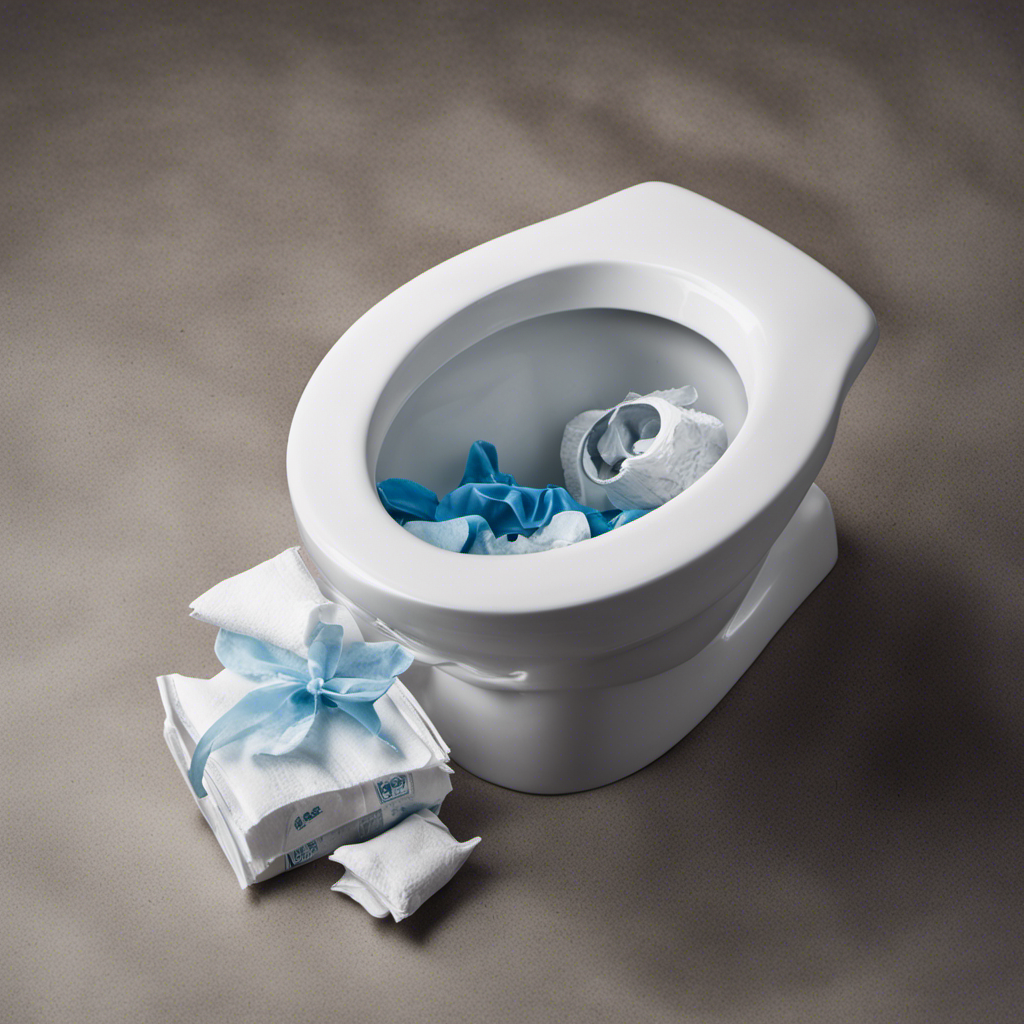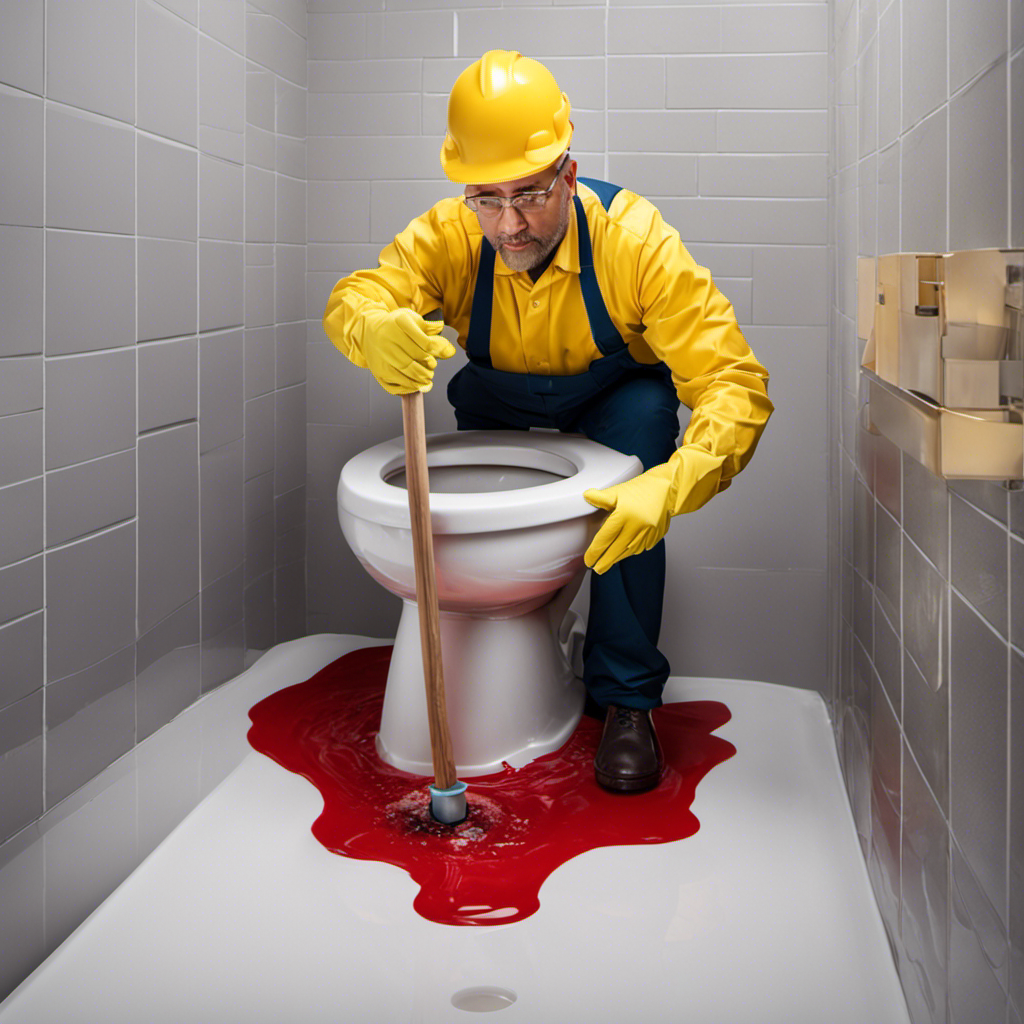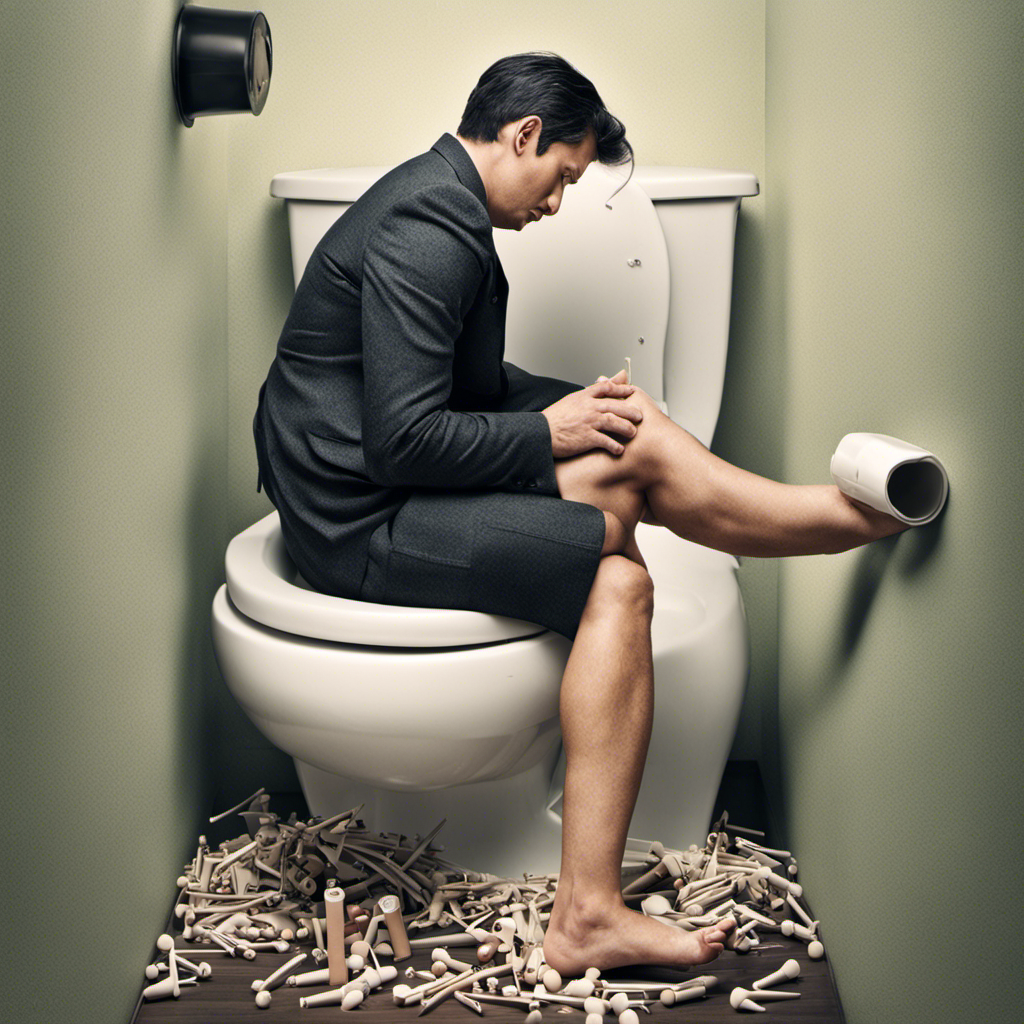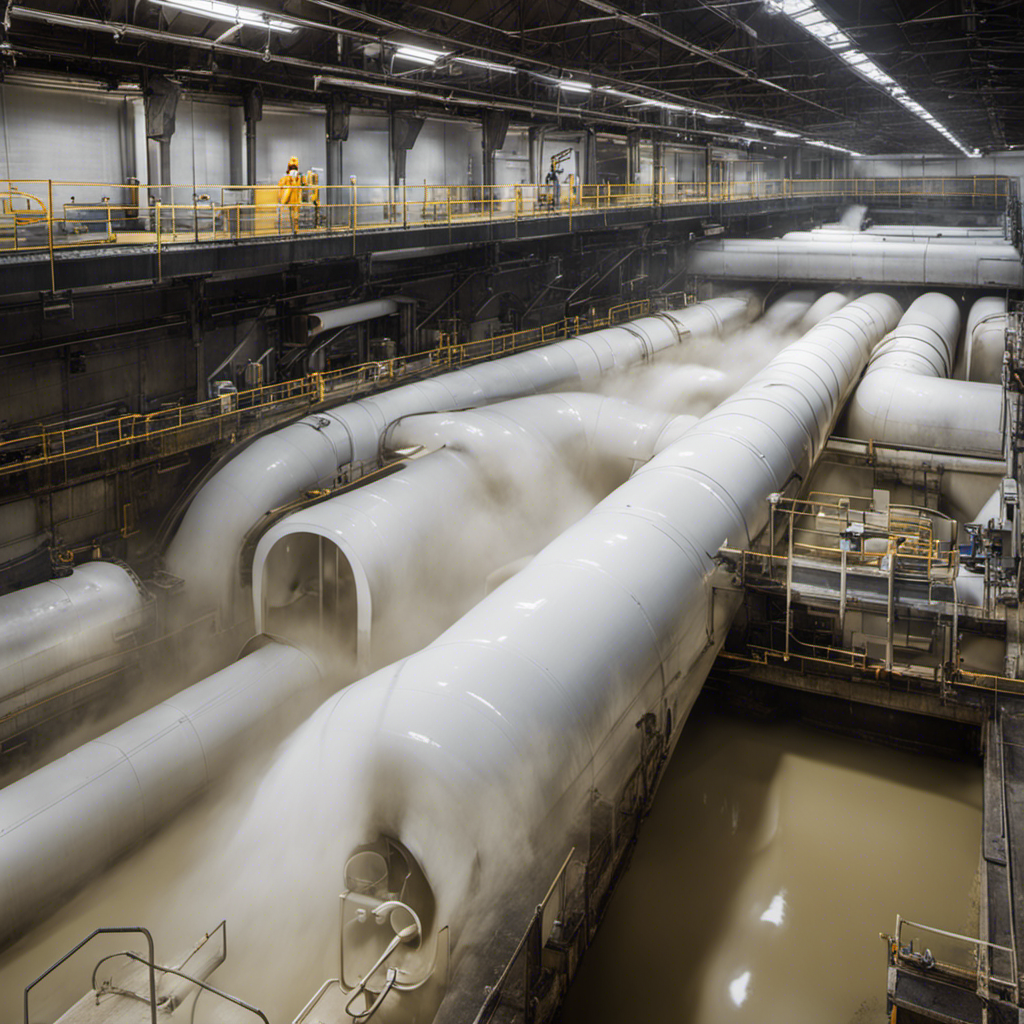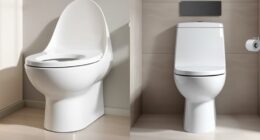Imagine never having to deal with a clogged toilet again. With a pressure toilet flush, we can say goodbye to those frustrating moments.
In this article, we will explore how a pressure toilet flush works, the advantages of using one, and how to choose the right one for your bathroom.
We will also discuss installation and maintenance tips, as well as troubleshooting common issues.
Get ready to master the art of the pressure toilet flush and enjoy a stress-free bathroom experience.
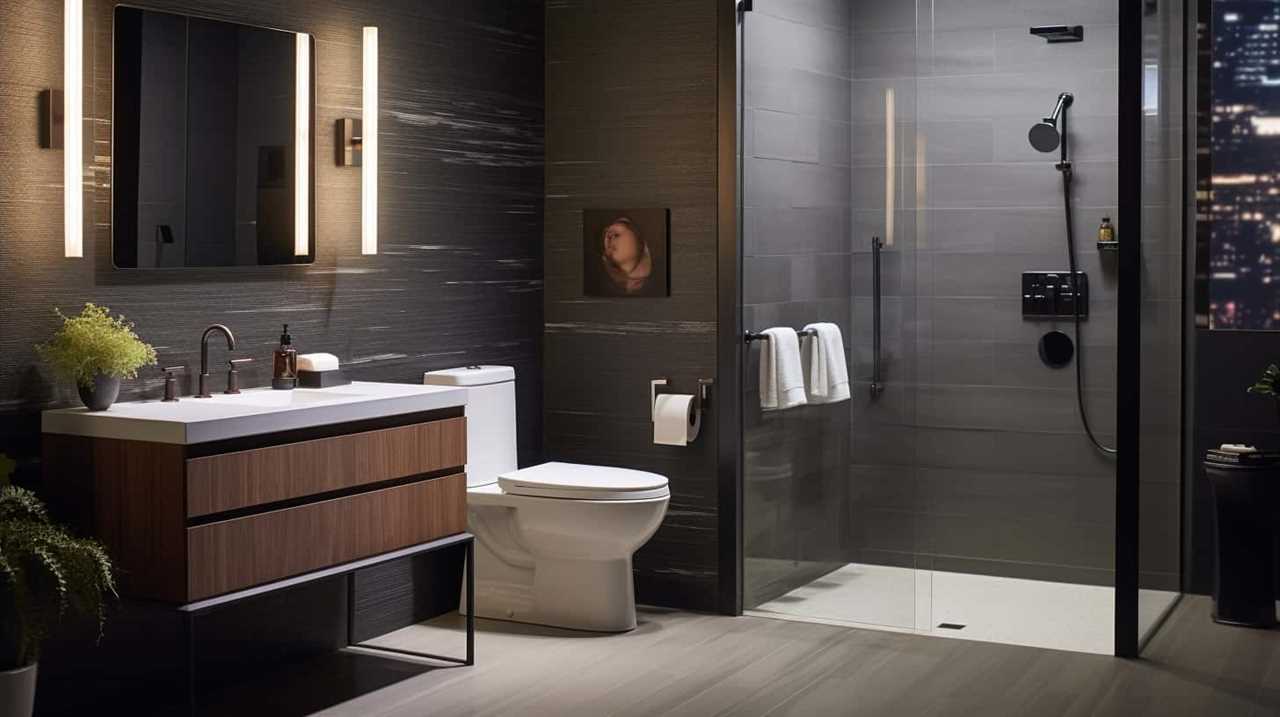
Key Takeaways
- Pressure toilet flushes utilize compressed air to increase water pressure, resulting in a more efficient and powerful flush.
- The advantages of using a pressure toilet flush include water efficiency, enhanced hygiene, reduced clogs, and improved flushing performance.
- When choosing a pressure toilet flush, consider factors such as the type of flush, water-saving features, compatibility with existing plumbing, and durability.
- Proper installation and maintenance of a pressure toilet flush are crucial for functionality and longevity. Troubleshooting common issues may involve adjusting water pressure, clearing blockages, replacing valves, or tightening connections.
How Does a Pressure Toilet Flush Work
To understand how a pressure toilet flush works, we need to explore the mechanics behind its efficient and powerful flushing mechanism.
A pressure assisted toilet flush operates by utilizing compressed air to increase the water pressure during the flushing process.
The water enters the tank and is held under pressure until the flush lever is activated.
When the lever is pressed, the compressed air is released, forcing the water out of the tank and into the bowl with increased velocity and force.
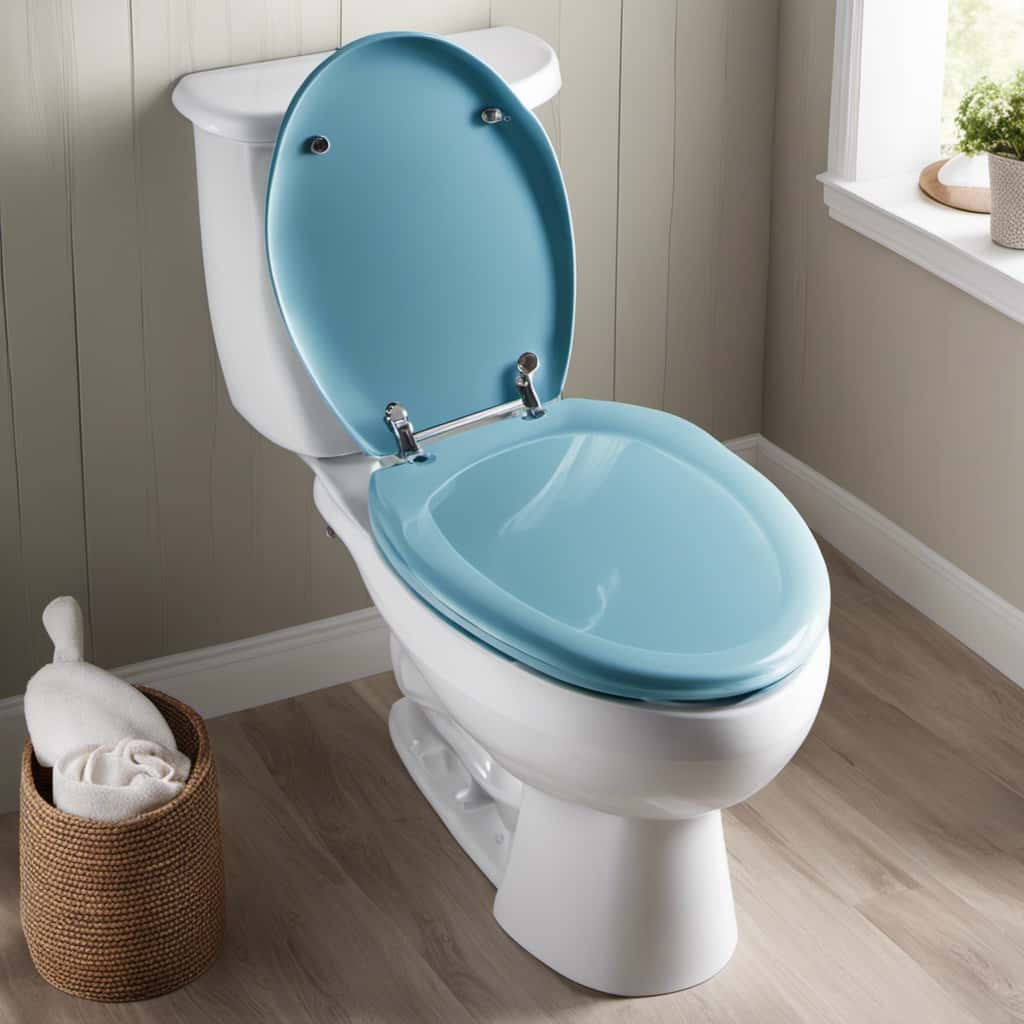
This high-pressure water flow effectively removes waste and cleans the bowl more thoroughly compared to traditional gravity-based flush systems.
The benefits of using a pressure assisted toilet flush include improved flushing performance, reduced clogging, and water conservation due to the use of lower water volumes.
Advantages of Using a Pressure Toilet Flush
Using a pressure toilet flush offers several advantages over traditional gravity-based flush systems. This innovative technology brings numerous benefits to users, particularly in terms of water efficiency and improved hygiene.
Here are three reasons why a pressure toilet flush is advantageous:
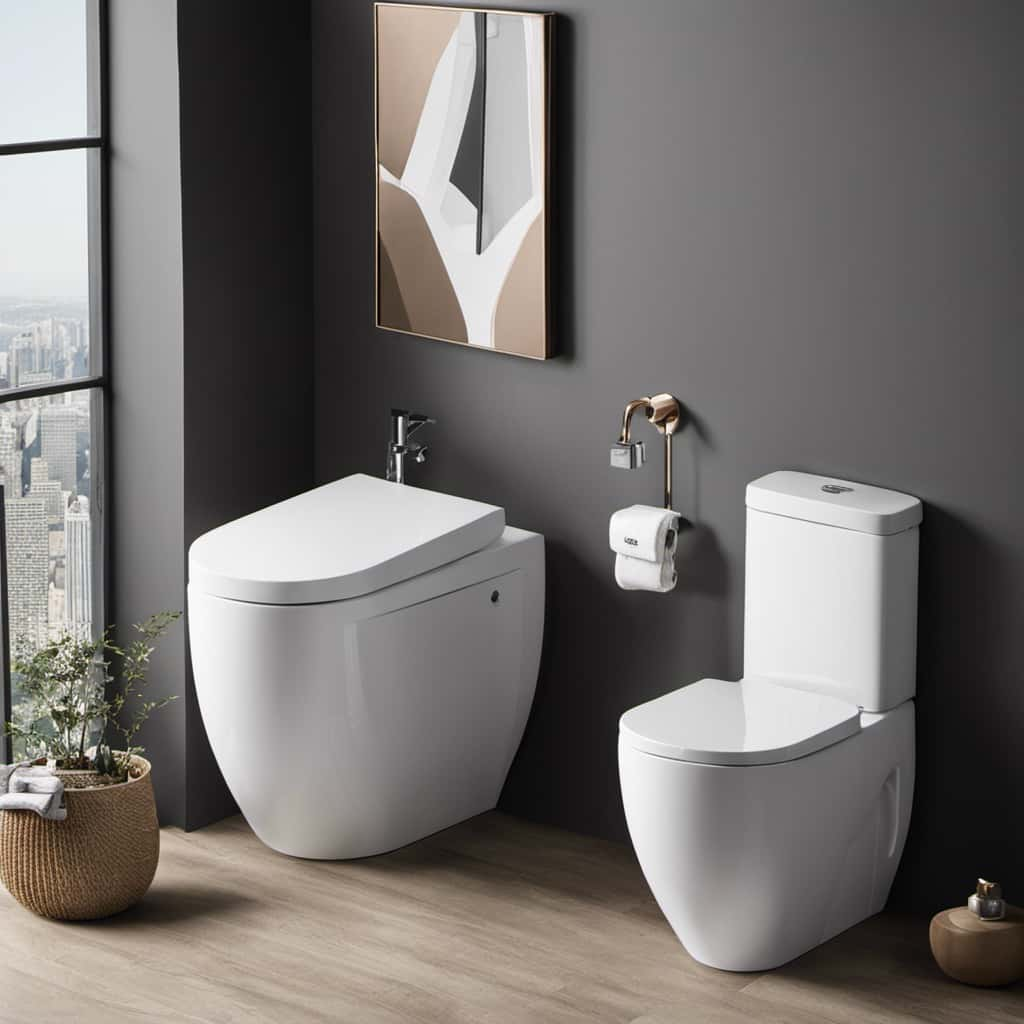
- Water Efficiency: A pressure flush system requires less water per flush compared to gravity-based systems. This means significant water savings over time, reducing both water consumption and utility costs.
- Enhanced Hygiene: The high-pressure water stream in a pressure flush system effectively removes waste and cleans the bowl more thoroughly than gravity-based systems. This reduces the chance of residue buildup and unpleasant odors, promoting better hygiene in the bathroom.
- Reduced Clogs: The increased force of the pressure flush system helps prevent clogs by quickly and efficiently removing waste from the bowl. This reduces the need for plunging or using harsh chemicals, saving time and effort.
Choosing the Right Pressure Toilet Flush for Your Bathroom
When selecting a pressure toilet flush for our bathroom, we need to consider a variety of factors.
One important factor to consider is the type of toilet flush. There are two main types: pressure-assisted and gravity-fed. Pressure-assisted flushes use pressurized air or water to create a strong flushing force, while gravity-fed flushes rely on the force of gravity to remove waste.
Another factor to consider is water-saving technology. Many pressure toilet flushes now come with water-saving features, such as dual-flush options or low-flow mechanisms. These features can help reduce water consumption and lower utility bills.
It’s important to choose a pressure toilet flush that suits our specific needs, taking into account the type of flush and the water-saving technology it offers.
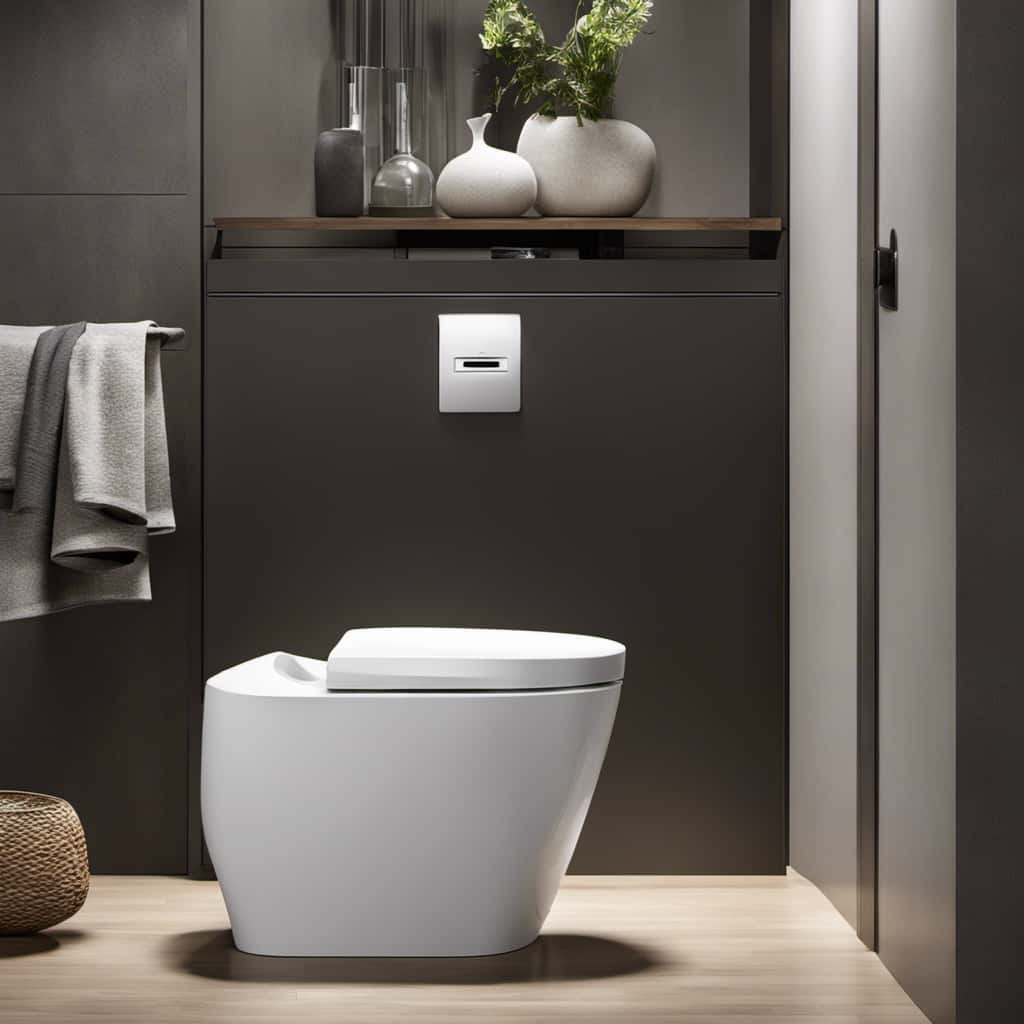
Installation and Maintenance of a Pressure Toilet Flush
For proper functionality and longevity, the installation and maintenance of a pressure toilet flush is crucial. Here are some installation tips and proper maintenance practices to ensure your pressure toilet flush operates at its best:
- Proper installation: Ensure that the pressure tank is mounted securely and at the correct height. Follow the manufacturer’s instructions carefully during installation to avoid any potential issues.
- Regular cleaning: Clean the pressure tank, pipes, and flush valve periodically to remove any mineral deposits or debris that may affect the performance of the flush. Use a mild detergent and a soft brush or cloth to clean these components.
- Check for leaks: Regularly inspect the connections and seals for any signs of leaks. Tighten any loose fittings and replace any damaged seals promptly to prevent water wastage.
Troubleshooting Common Issues With Pressure Toilet Flushes
To troubleshoot common issues with pressure toilet flushes, we will first need to identify the specific problem. Here are some common problems and DIY fixes that can help you resolve them:
| Problem | DIY Fix |
|---|---|
| Weak flush | Check water supply and adjust pressure |
| Clogged drain | Use a plunger or a drain snake to clear it |
| Continuously running flush | Adjust the fill valve or replace it |
| Leaking toilet | Replace the wax seal or tighten connections |
| Noisy flush | Replace the fill valve or flush valve |
Frequently Asked Questions
Can a Pressure Toilet Flush Be Retrofitted Into an Existing Bathroom?
Yes, a pressure toilet flush can be retrofitted into an existing bathroom. The retrofitting process involves installing a pressure-assisted flush system, which offers numerous benefits such as improved flushing power and water efficiency.
Are Pressure Toilet Flushes More Expensive Than Traditional Flush Systems?
Pressure toilet flushes have both pros and cons compared to traditional flush systems. They operate differently and can be more expensive, but their improved efficiency and powerful flushing capabilities make them worth considering.
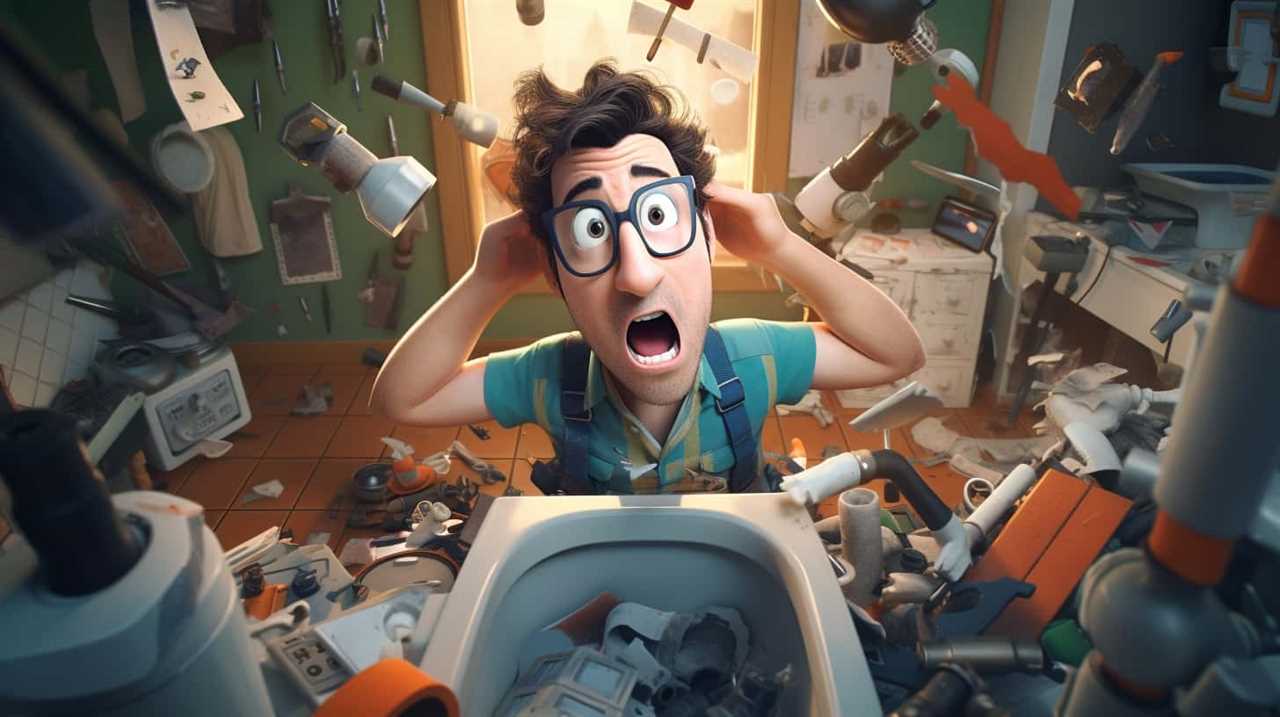
How Does a Pressure Toilet Flush Affect Water Usage?
Pressure toilet flushes have significant water conservation benefits and can reduce water usage. They also have an impact on plumbing infrastructure, requiring higher water pressure and potentially causing strain on pipes and valves.
Can a Pressure Toilet Flush Handle Solid Waste Effectively?
Yes, a pressure toilet flush can effectively handle solid waste. However, it is important to note that the effectiveness of a pressure toilet flush for liquid waste far surpasses its potential drawbacks for solid waste.
Are Pressure Toilet Flushes Noisy When in Operation?
When comparing the noise level of a pressure toilet flush to other systems, it’s important to note that pressure flushes tend to be quieter. Additionally, they usually do not require any special maintenance or repairs.
Conclusion
In conclusion, a pressure toilet flush offers numerous advantages, such as efficient and powerful flushing capabilities.
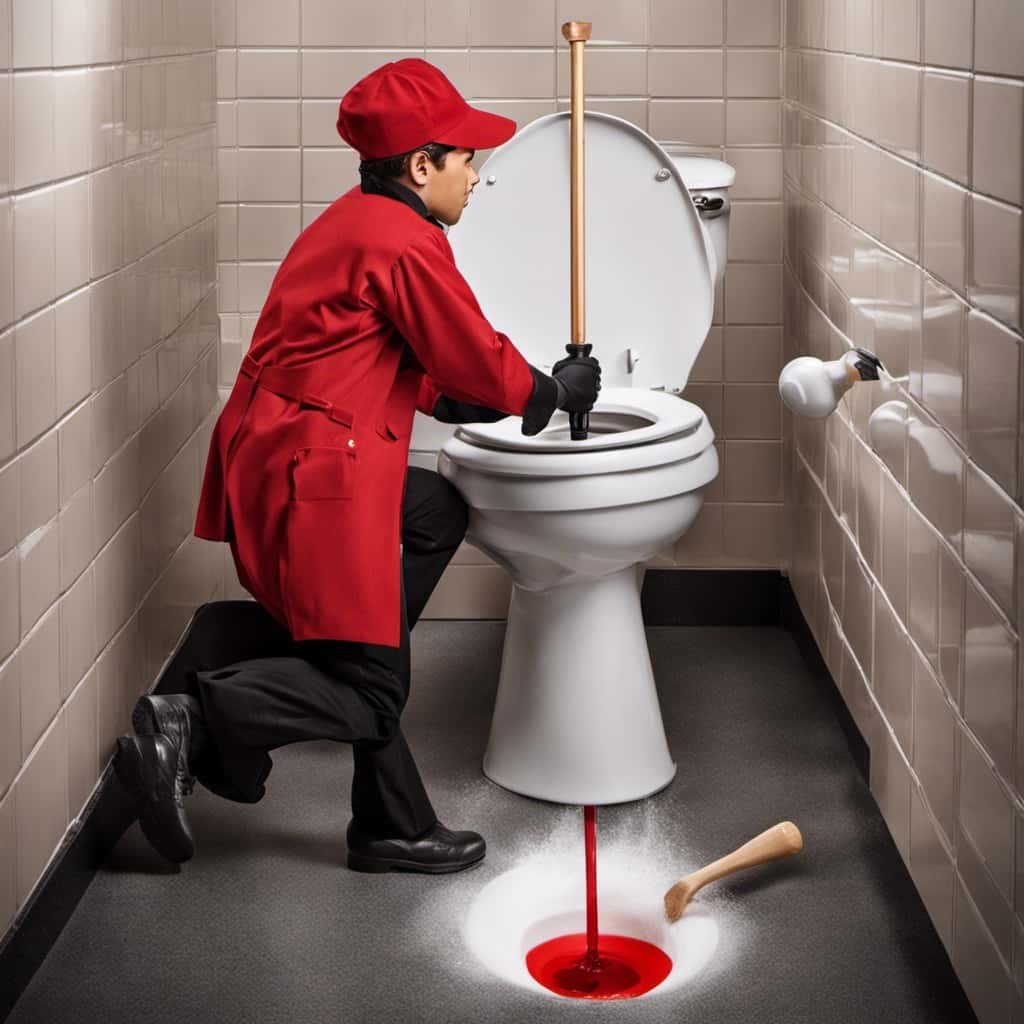
One interesting statistic is that pressure toilet flushes can save up to 50% more water compared to traditional gravity-fed flushes, making them a more environmentally friendly option.
With proper installation and maintenance, pressure toilet flushes can provide a reliable and effective solution for your bathroom.



